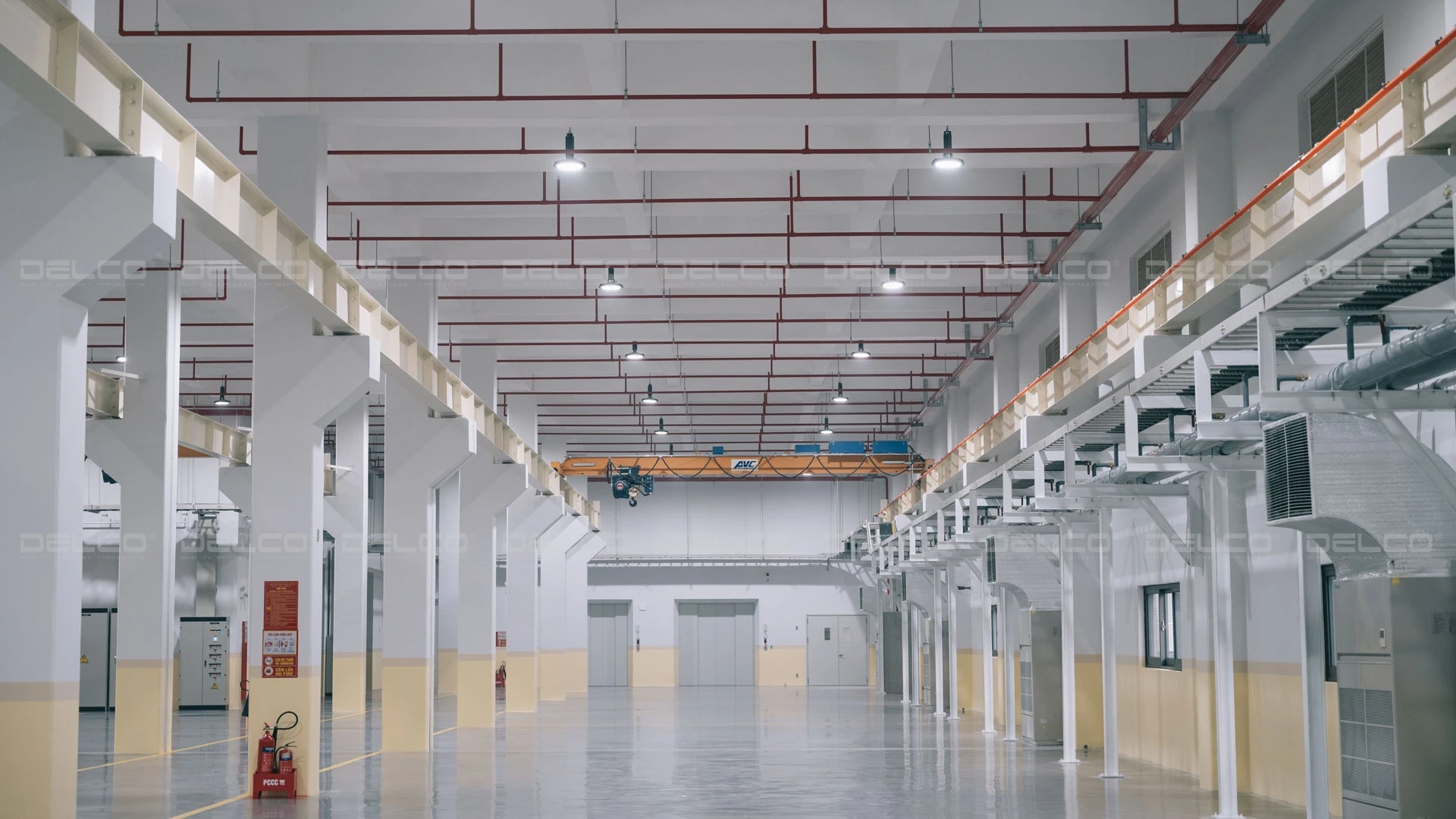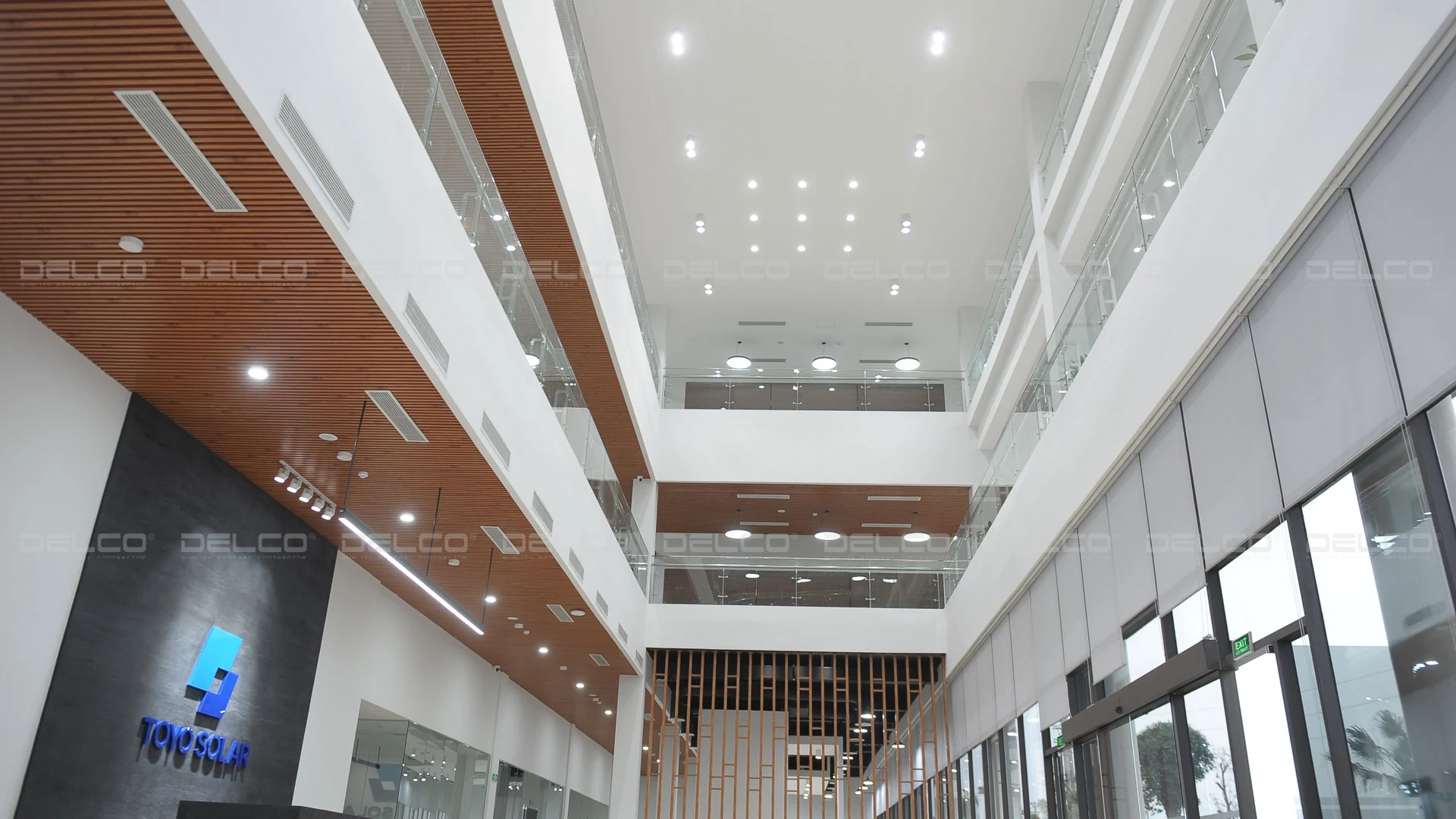Some typical errors in factory lighting design and their solutions can help optimize illumination, save energy, and ensure production efficiency.
The critical role of lighting in industrial factories
A proper lighting system that meets factory lighting standards is a vital factor in maintaining workplace safety within factories. A well-lit work environment helps workers maintain both physical and mental health, ensuring productivity. Adequate lighting positively impacts employee morale, reducing stress and enhancing focus, which in turn minimizes errors, improves product quality, and boosts work efficiency. According to a study published in the International Journal of Industrial Ergonomics in 2018, worker performance significantly improves when lighting levels are appropriately adjusted. In addition to general lighting, emergency lighting and exit lights are also crucial components of factory lighting systems. These systems ensure swift and safe evacuation in the event of an emergency, providing critical safety measures for factory operations.

Common types of factory lighting
Several types of lighting are commonly used in factories, including:
- Floodlights and high-pressure lamps: These provide wide beams of light, often used outdoors in areas requiring focused illumination, such as parking lots or factory entrances.
- LED Highbay lights: These lights deliver strong and uniform illumination, ideal for lighting large warehouses or factories with high ceilings ranging from 6–12 meters.
- LED Lowbay lights: Suitable for spaces with lower ceilings, under 6 meters, such as office areas or technical rooms.
- LED tube lights: Compact tube-shaped lights that produce long and even light strips, appropriate for office areas, meeting rooms, or factory spaces.
- LED panel lights: Slim, flat, and aesthetically pleasing lights that provide uniform illumination, often installed on ceilings in office areas.
- LED downlights: These lights emit soft, comfortable light and are typically recessed or surface-mounted in areas requiring high aesthetics, such as offices, meeting rooms, factory showrooms, or hallways.
- Emergency and exit lights: Installed at escape routes to ensure safety during emergencies.

Common issues in factory lighting design
Inappropriate lighting capacity
Insufficiently precise calculations during the factory lighting design process may result in the use of overly high-powered lights, causing energy waste and glare. Conversely, lights with too low power can lead to inadequate illumination, impairing visibility, causing eye strain, and reducing productivity. Therefore, it is essential to select lighting capacity appropriate for the functional area. For instance, brighter lighting is necessary in main production areas, while softer lighting suffices for offices, canteens, and break rooms.
Ceiling height affecting illumination
The average height of factory ceilings ranges from 4 to 12 meters, with some reaching up to 20 meters or more. The illumination level of lights is impacted by their installation height; the higher the ceiling, the lower the overall brightness. In large factories with high ceilings, high-powered lights such as HighBay lamps are required, or the installation height must be adjusted to ensure adequate brightness and minimize dark spots.

Improper IP rating selection for the production environment
In some factory areas with high levels of dust, moisture, or explosion risks, using lights with low IP (Ingress Protection) ratings can reduce durability, increase maintenance costs, and compromise production safety. The IP rating should be chosen based on the specific characteristics of each area. For example, mechanical workshops require lights with an IP65 rating or higher to prevent dust intrusion. Areas with high humidity, such as food processing plants, often use IP66-rated lights to withstand water jets from cleaning processes and resist damage from moisture. Chemical or fuel storage warehouses demand specialized explosion-proof lights that meet international safety standards, with IP ratings of 67 or higher.
Energy-saving and smart solutions
Due to their intensive operation, industrial factory lighting systems account for a significant portion of the factory’s energy consumption costs. Investors can consider using LED lighting solutions to reduce electricity usage and extend the lifespan of equipment. Architectural design strategies that maximize natural lighting, combined with artificial lighting, are another effective way to save energy. Additionally, integrating smart technologies such as motion sensors or automated lighting control systems can optimize illumination based on actual needs. These solutions help reduce operating costs and enhance energy efficiency, making the lighting system both economical and sustainable.
See more: Factory lighting standards in Vietnam
See more: Notes on designing and installing factory MEP systems






